The Well-Tempered Ear
Classical music: The new period-instrument group Sonata à Quattro makes its debut and excels in early Baroque music
Leave a Comment
ALERT: The All-Festival Concert that closes this summer’s 19th annual Madison Early Musical Festival will take place in Mills Hall on Saturday night at 7:30 p.m. Admission is $20 for the general public, $10 for seniors and students. Here are two links where you can find more specific information, including composers and works on the program:
https://memf.wisc.edu/event/all-fest-2018/
By Jacob Stockinger
Here is a special posting, a review written by frequent guest critic and writer for this blog, John W. Barker. Barker (below) is an emeritus professor of Medieval history at the University of Wisconsin-Madison. He also is a well-known classical music critic who writes for Isthmus and the American Record Guide, and who hosts an early music show once a month on Sunday morning on WORT FM 89.9 FM. For years, he served on the Board of Advisors for the Madison Early Music Festival and frequently gives pre-concert lectures in Madison.
By John W. Barker
Marika Fischer Hoyt (below) is becoming another powerhouse in our musical scene. Already a spark plug of the Ancora String Quartet, and now the director of the annual “Bach Around the Clock” bashes, she has organized a new ensemble, Sonata à Quattro, which made its debut on Wednesday night at Pres House.
This was done under the aegis of the current Madison Early Music Festival (MEMF) as a “fringe concert” — in the manner long-established by the Boston Early Music Festival. Plus, the concert’s theme was “The Lübeck Connection,” clearly tying it to the MEMF.
The music was early Baroque, almost entirely from the 17th century.
The first half presented pieces by seven composers, including, among the better-known ones, Michael Praetorius, Giovanni Gabrieli, Heinrich Schütz, Heinrich Ignaz Biber and Antonio Vivaldi.
In the earlier pieces, the instruments were not originally specified at all — and one of them was in fact purely vocal. But the later ones clearly displayed the definition of the early string ensemble.
Indeed, the basic players — besides the backup harpsichord — were seated (below) in what is now familiar in the configuration of the latter-day string quartet, with the subtle suggestion that the earlier sonata à quattro genre was its natural predecessor.
The presence here of Vivaldi—besides Gabrieli, the only Italian among these Germans, and of later date—seemed a bit incongruous, but his familiar Sinfonia ‘al Santo Sepolcro’ actually illustrated well the mature à quattro texture. (You can hear the Vivaldi in the YouTube video at the bottom.)
And a most impressive conclusion for this first half of the program was the fascinating eight-part Sonata in A minor by the sadly neglected Samuel Capricornus (1628-1665)—its eight-voice scoring not serving as a double choir but as a richly textured study in contrasting high with low parts.
For this first half, the core performers were Nathan Giglierano and Christine Hauptly Annin, violins; Fischer-Hoyt, viola; and Charlie Rasmussen, cello, with harpsichordist Daniel Sullivan.
They were joined along the way by gambist Phillip Serna (below top) who performed later on violone; and, for the Capricornus also violinist Thalia Coombs (below second), violist Micah Behr (below third) and viola da gambist Eric Miller (below bottom, in a photo by Katrin Talbot).
The program’s second half was devoted entirely to the music of Dietrich Buxtehude (below, ca. 1637-1707), the big star of the MEMF constellation.
First we had a Trio in B-flat from his Op. 2 collection, then a slightly French-style solo harpsichord Suite in D minor from Daniel Sullivan (below top).
Finally, we had two solo cantatas, sung by Kristin Knutson (below bottom), whose lovely soprano voice blended beautifully with the instruments.
This new ensemble will continue with concerts scheduled ahead for the coming season. But certainly this appearance represents a beautiful, and perfectly timed, introduction in a concert of true delight.
Tags: #AmericanRecordGuide, #AncoraStringQuartet, #AntonioVivaldi, #BachAroundtheClock, #BaroqueEra, #BaroqueMusic, #BostonEarlyMusicFestival, #ChamberMusic, #DietrichBuxtehude, #EarlyBaroque, #GermanBaroque, #GermanComposers, #GermanMusic, #GiovanniGabrieli, #HarpsichordContinuo, #HarpsichordMusic, #HeinrichBiber, #HeinrichSchütz, #IsthmusNewspaper, #ItalianBaroque, #ItalianComposers, #JohannSebastianBach, #JohnW.Barker, #LübeckGermany, #MadisonEarlyMusicFestival, #MedievalHistory, #MichaelPraetorius, #MusicCritic, #PeriodInstrument, #PresHouse, #RadioHost, #SamuelCapricornus, #SonataaQuattro, #StringQuartet, #UniversityofWisconsin, #UniversityofWisconsin-Madison, #WORT-FM89.9, #YouTubevideo, American Record Guide, Ancora String Quartet, Antonio Vivaldi, Arts, Bach, Baroque, Boston Early Music Festival, Cantata, Cello, Chamber music, Classical music, composer, critic, debut, Dietrich Buxtehude, Early music, ensemble, Gabrieli, Germany, Giovanni Gabrieli, harpsichord, Heinrich Biber, Heinrich Schütz, History, Isthmus, Italian Baroque, Italian composers, Jacob Stockinger, Johann Sebastian Bach, John W. Barker, lecture, Madison Early Music Festival, Medieval, MEMF, Michael Praetorius, Music, natural, public, Radio, Samuel Capricornus, show, solo, Sonata, soprano, String quartet, Student, Suite, United States, University of Wisconsin-Madison School of Music, University of Wisconsin–Madison, Viola, viola da gamba, Violin, violone, Vivaldi, vocal music, voice, Wisconsin, WORT-FM 89.9, YouTube
Classical music: The early music, period-instrument group Sonata à Quattro plays a very varied “fringe concert” during the Madison Early Music Festival this Wednesday night
13 Comments
By Jacob Stockinger
The new early music, period-instrument group Sonata à Quattro (below, in a photo by Lori Skelton) will perform a “Fringe Concert” during this year’s Madison Early Music Festival of a program called “The Lübeck Connection.”
The theme of this year’s MEMF, which is taking place all this week, focuses on music in the fabled choir library at St. Mary’s Church in Lübeck (below). All the works on the program were written by composers represented in that library. The program will run 90 minutes with one intermission.
The concert takes place on this Wednesday night, July 11, at 7:30 p.m., at Pres House, 731 State St.
Tickets will be available at the door, for general seating, at $20 for general admission and $10 for seniors, students and MEMF participants. Cash, check or charge will be accepted. A marzipan reception follows.
The first half of the program of Baroque music from the 17th and 18th centuries includes works by Giovanni Gabrieli, Heinrich Schütz, Michael Praetorius, Hermann Schein, Johann Staden, Heinrich Biber, Antonio Vivaldi and Samuel Capricornus.
The second half is all-Dietrich Buxtehude (below). You can hear a section of Buxtehude’s Trio Sonata in B-flat Major, Bux259, which is on the program, in the YouTube video at the bottom.
The ensemble (seen at the top of this story) is composed of violinists Nathan Giglierano and Christine Hauptly Annin; violist Marika Fischer Hoyt; cellist Charlie Rasmussen; and harpsichordist Daniel Sullivan.
Additional musicians include soprano Kristin Knutson, violinist Thalia Coombs, violist Micah Behr, and Phillip Serna and Eric Miller on violas da gamba.
You can get more information and follow the group on Facebook at: https://www.facebook.com/sonataaquattro/
One other performance of this program will take place. It is this coming Sunday, July 15, at 7 p.m. in St. Matthias Episcopal Church, 11 E. Main St., in Waukesha. For information, go to: https://stmatthiasepiscopalchurch.ticketleap.com/the-lubeck-connection
Tags: #AntonioVivaldi, #CelloMusic, #ChamberMusic, #ChristianChurch, #ChristianReligion, #DietrichBuxtehude, #EpiscopalChurch, #FacebookPost, #GiovanniGabrieli, #HarpsichordMusic, #HeinrichBiber, #HeinrichSchütz, #HermannSchein, #InstrumentalMusic, #JohannStaden, #LübeckGermany, #MadisonEarlyMusicFestival, #MichaelPraetorius, #PeriodInstrument, #PresHouse, #ProtestantReligion, #RomanCatholic, #RomanCatholicism, #SamuelCapricornus, #SonataaQuattro, #St.MatthiasEpiscopalChurch, #TrioSonata, #VioladaGamba, #ViolaMusic, #ViolinMusic, #VocalMusic, Arts, Bach, Baroque, Buxtehude, Capricornus, Cello, Chamber music, Classical music, composer, Early music, earlymusic, Facebook, Germany, Giovanni Gabrieli, harpsichord, Heinrich Biber, Heinrich Schütz, Hermann Schein, instrumental music, Jacob Stockinger, Johann Sebastian Bach, Johann Staden, library, Lubeck, Madison Early Music Festival, Marienkirche, marzipan, MEMF, Michael Praetorius, Music, performance, reception, Samuel Capricornus, singer, Sonata, soprano, St. Mary, ticket, trio sonata, United States, University of Wisconsin-Madison School of Music, University of Wisconsin–Madison, Viola, viola da gamba, Violin, violinist, Vivaldi, vocal music, Waukesha, week, Wisconsin, YouTube
Classical music education: The Wisconsin Youth Symphony Orchestras perform their spring concerts this Saturday and Sunday.
3 Comments
By Jacob Stockinger
The Wisconsin Youth Symphony Orchestras (WYSO) will wind up their 50th anniversary season when they present the final concert series of the season — the Eugenie Mayer Bolz Family Spring Concerts — on this Saturday, May 21, and Sunday, May 22.
The concert series will be held in Mills Concert Hall in the University of Wisconsin-Madison campus in the George Mosse Humanities Building, 455 North Park Street, in Madison.
WYSO concerts generally run about an hour and a half in length, providing a great orchestral concert opportunity for families.
Tickets are available at the door, $10 for adults and $5 for young people 18 and under.
Almost 400 young musicians will display their talents to the community during four concerts.
The concert series will drop its downbeat at 1:30 p.m. on Saturday, May 21, when Sinfonietta (below), under the baton of Mark Leiser, takes the stage. The group will perform the Poet and Peasant Overture by Franz von Suppe; the Suite for String Orchestra on Old English Songs by Ritter George; the Adagio from Symphony No. 2 by Sergei Rachmaninoff; As Summer Was Just Beginning (Song for James Dean) by Daehn; and Final Quest composed by Chisam.
Following Sinfonietta, Christine Mata-Eckel will lead the Concert Orchestra (below) on stage to perform Kallalanta by William Harbinson, Peter Tchaikovsky’s Romeo and Juliet and finally Jacob’s Fantasia on the Alleluia Hymn.
The Harp Ensemble (below), under the direction of Karen Beth Atz, will also perform at this concert. It will be performing Courante CLXXXIII by Michael Praetorius and Toward the Sun by Izmaylov.
For the 4 p.m. concert on Saturday, May 21, Vicki Jenks will direct the Percussion Ensemble (below) as it gets the concert started. It will perform Dark Flight by Campbell and their annual performance of Londonderry Air (“Danny Boy”) in honor of graduating seniors.
Following Percussion Ensemble, the Philharmonia Orchestra (bel0w), under the direction of Michelle Kaebisch, will take the stage. It will perform the final movement of Jean Sibelius’ Symphony No. 2 and Espana by Emmanuel Chabrier.
The orchestra will also perform two concertos featuring the Philharmonia Orchestra Concerto Competition Winners. Pianist Antonio Wu (below top) will perform Felix Mendelssohn’s Piano Concerto and violinist Monona Suzuki (below bottom) will perform the Carmen Fantasy for Solo Violin by Pablo de Sarasate.
On Sunday, May 22, at 2 p.m. WYSO’s Brass Choirs (below) under the direction of Brett Keating will start the show performing works by George Frideric Handel, Olson, Heinrich Schutz and more.
Following Brass Choirs, Youth Orchestra (below) with WYSO music director James Smith will perform four concertos along with Franz Liszt’s Hungarian Rhapsody No. 2.
Violinist Thea Valmadrid (below top) will perform Tzigane for Solo Violin by Maurice Ravel; violinist Aurora Greane (below second) will play the first movement of the Violin Concerto by Tchaikovsky; pianist Audrianna Wu (below third) will perform the final movement of the Piano Concerto by Edvard Greig; and cellist Tatiana Tandias (below bottom) will perform the first movement of the Cello Concerto by Sir Edward Elgar.
These concerts are generously supported by the Eugenie Mayer Bolz Family, along with funds from Dane County, the Endres Mfg. Company Foundation, The Evjue Foundation, Inc., charitable arm of The Capital Times, W. Jerome Frautschi Foundation and Pleasant T. Rowland Foundation. This project is also supported in part by additional funds from the Wisconsin Arts Board, the State of Wisconsin, and the National Endowment for the Arts.
Tags: Arts, Baroque, brass, Campus, Carmen, Chabrier, Classical music, concerto, Dane County, Early music, Elgar, Eve Foundation, Fantasia, Franz von Suppe, George Frideric Handel, Grieg, harp, Jacob Stockinger, Jerry Frautschi, Madison, Mendelssohn, Michael Praetorius, Music, Music education, National Endowment for the Arts, NEA, opera, Orchestra, percussion, Piano, Piano concerto, Pleasant T. Rowland, Poet and Peasant Overture, Rachmaninoff, Rachmaninov, Ravel, Romeo and Juliet, Sibelius, strings, symphony, Tchaikovsky, The Capital Times, United States, University of Wisconsin-Madison School of Music, University of Wisconsin–Madison, Violin, Violin concerto, Wisconsin, Wisconsin Arts Board, Wisconsin Youth Symhony Orchestras, WYSO, YouTube
Classical music: The Madison Youth Choirs’ Winter Concerts this Sunday will explore links between science and music. Plus, the UW Wind Ensemble performs a FREE concert Thursday night.
Leave a Comment
ALERT: Thursday night at 7:30 p.m. in Mills Hall, the UW Wind Ensemble will perform a FREE concert. The program features “Concerto X” by Scott McAllister with clarinet soloist Wesley Warnhoff, adjunct professor of clarinet. It is a work based on grunge music that was born in the heavy metal music of the late 80s and early 90s, including a melody from Nirvana’s “Where Did You Sleep Last Night?” Also on the program is “In Wartime” by David Del Tredici, which was inspired by the World Trade Center attacks on September 11, 2001; and the Second Suite in F Major for Military Band by Gustav Holst.
By Jacob Stockinger
A friend at Madison Youth Choirs writes:
On this Sunday, Dec. 13, the young singers of Madison Youth Choirs (MYC, seen below at the Winter Concert last year) will present the 2015 Winter Concert Series, “Inquiry: Science, Music, Imagination” at First Congregational United Church of Christ in Madison, 1609 University Avenue, near Camp Randall.
Over 14 weeks of rehearsals in preparation for the concerts, the 330 young vocalists (ages 7-18) in MYC’s nine performing choirs have been learning to use the tools of observation, experimentation, and analysis to reach a deeper understanding of their choral repertoire.
Students have also begun to recognize the role that resilience plays in both scientific and musical fields, learning how to work through moments of frustration and uncertainty to reach new discoveries.
The choirs will perform a varied program, including works by Benjamin Britten, Wolfgang Amadeus Mozart and Vincent Persichetti; a Peruvian lament, a Spanish villancico, and a newly-created arrangement of the oldest-known surviving English song.
Tickets for each of the three concerts (high school ensembles at 1:30 p.m., boychoirs at 4 p.m., girlchoirs at 7 p.m.) will be $10 for general admission, $5 for students age 7-18 and free for children under 7.
Audience members will need a separate ticket for each concert.
Here is the schedule:
1:30 p.m. High School Ensembles featuring a guest appearance by the MYC-Capitol Lakes Intergenerational Choir
4 p.m. Boychoirs
7 p.m. Girlchoirs
Tickets available at the door, $10 for general admission, $5 for students 7-18, and free for children under 7
This concert is generously endowed by the Diane Ballweg Performance Fund with additional support from the American Girl’s Fund for Children, BMO Harris Bank, the Madison Community Foundation, and the Wisconsin Arts Board.
Here is a repertoire list for the programs:
1:30 p.m. Concert (Featuring High School Ensembles)
Cantilena
Bel Tempo Che Vola ……………….Jean Baptiste Lully
Weep No More………………………..David Childs
Songbird…………………………………Sarah Quartel
Sound the Trumpet………………….Henry Purcell
When I Set Out for Lyonesse……Keith Bissell
Ragazzi (below in a photo by Karen Holland)
Regina Coeli (sung in Italian)……Gregorian chant, ca. 10th century
Regina Coeli (sung in Italian)……Giovanni Pierluigi da Palestrina
Song of Peace……………………………Vincent Persichetti
Dulaman (sung in Gaelic) …………Michael McGlynn
Cantabile
Utopia………………………………………………………..Moira Smiley
Lacrimoso son io (K. 555, sung in Italian)…….Wolfgang Amadeus Mozart
The Gods Have Heard My Vows…………………….Thomas Weelkes
Palomita……………………………………………………..Traditional Peruvian lament
Hoj, hura, hoj!………………………………………………………..Omar Macha
Cantabile and Ragazzi
Apple-Tree Wassail………………………Stephen Hatfield
MYC/Capitol Lakes Intergenerational Choir and Combined Choirs
Forever Young……………………………..Bob Dylan
4 p.m. Concert (Featuring Boychoirs)
Combined boychoirs, Purcell, Britten, Holst, Ragazzi
Intonent Hodie…………………………………..Anonymous (probably 12th century)
Sainte Nicholaes (sung in Latin)…………..Godric of Finchale
Purcell
Singt den Herrn (sung in German)…Michael Praetorius
Who Can Sail……………………………..Norwegian Folk Song, Arr. Jeanne Julseth-Heinrich
Rolling Down to Rio……………………Edward German
Britten (below with Purcell Choir in a photo by Karen Holland)
Rattlesnake Skipping Song……Derek Holman
Tit-for-Tat…………………………….Benjamin Britten
Jerusalem……………………………..Sir Hubert Parry, poem by William Blake
Holst (below with Pucell and Britten choirs in a photo by Karen Holland)
Riu Riu Chiu (sung in Spanish)….Anonymous, from Villancicos de diversos Autores
Anima Mea (sung in Latin)……….Michael Praetorius
The Sound of Silence…………………Paul Simon
Ragazzi
Regina Coeli (sung in Italian)………Gregorian chant, ca. 10th century
Regina Coeli (sung in Italian)………Giovanni Pierluigi da Palestrina
Song of Peace……………………………..Vincent Persichetti
Dulaman (sung in Gaelic) ……………Michael McGlynn
Combined boychoirs, Purcell, Britten, Holst, Ragazzi
Hava Nashira (sung in Hebrew)……….Traditional Hebrew canon
7 p.m. Concert (Featuring Girlchoirs)
Choraliers
Hava Nashira (sung in Hebrew)……….Traditional Hebrew canon
You’ll Never Guess What I Saw………….Ruth Watson Henderson
Suo Gan…………………………………..Welsh Lullaby, Arr. by Alec Rowley
Tailor of Gloucester…………………..English Folk Song, Arr. by Cyndee Giebler
Con Gioia (below in a photo by Karen Holland)
Donkey Carol………………………….John Rutter
Mid-Winter…………………………….Bob Chilcott
Fancie……………………………………Benjamin Britten
Capriccio (below in a photo by Mike Ross)
Sound the Trumpet………………………………Henry Purcell
An die Musik (D. 547, sung in German, heard at bottom in a YouTube video with soprano Elizabeth Schwarzkopf and pianist Gerald Moore)…..Franz Schubert
Palomita (sung in Spanish)……Traditional Peruvian lament, Arr. by Randal Swiggum
Niska Banja………………………….Serbian Gypsy Dance, Arr. by Nick Page
About the Madison Youth Choirs (MYC): Recognized as an innovator in youth choral music education, Madison Youth Choirs (MYC) welcomes singers of all ability levels, annually serving more than 1,000 young people, ages 7-18, through a wide variety of choral programs in our community. Cultivating a comprehensive music education philosophy that inspires self-confidence, personal responsibility and a spirit of inquiry leading students to become “expert noticers,” MYC creates accessible, meaningful opportunities for youth to thrive in the arts and beyond.
Tags: 9/11, analysis, Art, Arts, band, Baroque, Benjamin Britten, BMO Harris Bank, Bob Dylan, boychoir, chant, choral music, clarinet, Classical music, concerto, dance, David DelTredici, Donkey Carol, England, English music, experiment, folk song, Franz Schubert, George Frideric Handel, girlchoir, Gregorian chant, grunge, gypsy, Hebrew, Henry Purcell, high school, Holst, Hubert Parry, intergenerational, Italian, Italy, Jacob Stockinger, Jean-Baptiste Lully, John Rutter, Madison, Madison Youth Choirs, Michael Praetorius, Mozart, Music, Nirvana, Norway, Norwegian, observation, Palestrina, Paul Simon, Persichetti, Peru, Piano, science, Scott McAllister, September 11 attacks, Serbia, solo, song, Spain, Spanish, Suite, terrorism, traditional, United States, University of Wisconsin-Madison School of Music, University of Wisconsin–Madison, vocal music, vocalist, winds, winter, Wolfgang Amadeus Mozart, YouTube
Classical music: The Madison Chamber Choir will perform Menotti’s madrigal fable “The Unicorn, the Gorgon and the Manticore” this Friday night. On Tuesday night, The Empire Brass and organist Douglas Major perform at the Overture Center.
Leave a Comment
A REMINDER: Tomorrow night, Tuesday, May 12, at 7:30 p.m, in Overture Hall at the Overture Center, the Empire Brass (below left) will perform a mostly Baroque program with guest organist Douglas Major (below right). Composers on the program include Johann Sebastian Bach, Dietrich Buxtehude, Henry Purcell and Michael Praetorius. Here is link to the Madison Symphony Orchestra‘s website with the complete program and background information:
http://www.madisonsymphony.org/empire
By Jacob Stockinger
Larger groups and presenters such as the Madison Symphony Orchestra , the Madison Opera, the Wisconsin Chamber Orchestra, the Wisconsin Union Theater, Edgewood College and the University of Wisconsin-Madison School of Music and the University Opera have finished their concert seasons.
Soon the major summer events — the Bach Dancing and Dynamite Society, the Madison Early Music Festival, the Token Creek Chamber Music Festival and Opera in the Park — will take place.
But not before smaller groups, who are still winding up their season, have finished.
The Ear has received the follow announcement:
Dear Friends,
I’d like to make you aware of an upcoming concert by the Madison Chamber Choir (below).
The concert is this Friday night, May 15, at 7:30 p.m., in Christ Presbyterian Church, 944 East Gorham Street, in downtown Madison.
Admission is a $10 suggested donation.
The program features “The Unicorn, the Gorgon and the Manticore” by the Italian-American composer Gian Carlo Menotti (below), most famous perhaps for establishing the Spoleto Festival and for his Christmas TV opera “Amahl and the Night Visitors.” You can hear excerpts from the “Unicorn” in a YouTube video at the bottom.
The work is described as a “madrigal fable about an odd poet his strange pets and the shallow whims of his faddish neighbors.” Assorted guest chamber instrumentalists will join the choir for the cantata.
The artistic director of the Madison Chamber Choir is Albert Pinsonneault (below), who also teaches at Edgewood College and directs the Madison Choral Project.
Here is a link to the choir’s website about the concert:
http://www.madisonchamberchoir.net/performances/
And here is a link to a sample of the choir’s singing:
http://www.madisonchamberchoir.net/media/
Tags: 20th-century classical music, Academic term, Albert Pinsonneault, Amahl and the Night Visitors, Arts, Bach Dancing and Dynamite Society, Baroque, Baroque music, brass, Cantata, choral music, Classical music, Edgewood College, Empire Brass, fable, Gian-Carlo Menotti, gorgon, Henry Purcell, instrumental, Jacob Stockinger, Johann Sebastian Bach, Madison, Madison Chamber Choir, Madison Choral Project, Madison Early Music Festival, Madison Opera, Madison Symphony Orchestra, madrigal, manticore, MEMF, Michael Praetorius, Music, Orchestra, organ, Overture Center, Singing, Spoleto Festival, Token Creek Chamber Music Festival, unicorn, United States, University of Wisconsin-Madison School of Music, University of Wisconsin–Madison, Wisconsin Chamber Orchestra, Wisconsin Union Theater, YouTube
Classical music: The new early music, a cappella vocal group Voces Aestatis (Voices of Summer) makes an impressive debut with many Renaissance composers and works. Plus, the Token Creek Chamber Music Festival opens to acclaim.
Leave a Comment
ALERT: Perhaps you didn’t make it to the opening of the Token Creek Chamber Music Festival last Saturday night or Sunday afternoon (below is a photo of the renovated barn concert hall). The festival runs through this coming Sunday afternoon and is celebrating both its 25th anniversary and the 300th anniversary of the birth of Carl Philip Emmanuel Bach. Here is a link to a review written for the Classically Speaking blog of Madison Magazine by Greg Hettmansberger, along with two preview stories from this blog:
By Jacob Stockinger
Last Friday was one of those nights, one of those increasingly frequent “train wrecks,” as The Wise Critic likes to call them, when two or more worthy classical musical events conflict and compete.
The Ear could not be in two places at once.
The two concerts were given by the Madison Area Youth Chamber Orchestra (MAYCO), which was reviewed yesterday by John W. Barker.
At another venue, at exactly the same time, the new early music vocal group Voces Aestatis made its Madison debut.
To give you an idea of that performance, The Ear welcomes another new reviewer -– Ann Boyer, a retired medical research librarian at the University of Wisconsin-Madison and a longtime member of the UW-Madison Choral Union.
Here is her review debut for The Well-Tempered Ear:
By Ann Boyer
The new Renaissance Choral group Voces Aestatis (Latin for Summer Voices) — all 13 of them, including director Ben Luedcke — delighted the 200 or so listeners who filled St. Andrew’s Episcopal Church, on Regent Street, last Friday night. (Below is a photo of the choral group, minus Jerry Hui, the composer, singer and teacher who did graduate work at the University of Wisconsin-Madison School of Music and now teaches at the University of Wisconsin-Stout.)
They had rehearsed four times, we learned, but had been instructed to come prepared. They were professionals, and it showed.
Songs were arranged in thematic pairs or threes, the sacred songs reflecting such themes as the imperfection of humankind, the birth of Jesus (emphasizing Mary’s role), and the death of Jesus.
Composers included Michael Praetorius, De Victoria and Giovanni di Palestrina, Orlando di Lasso, Thomas Tallis, Orlando Gibbons and Heinrich Schütz. A particularly beautiful song was one by Antonio Lotti (below)
The second half of the program consisted of secular songs: the famous “Mille Regretz” (A Thousand Regrets) by Josquin des Prez (below and at bottom in a YouTube video performance by the famed Jordi Savall), sung sweetly and gently; the strange, expressionistic harmonies of Gesualdo and a work by Claudio Monteverdi with surprisingly erotic lyrics. A final pair of somber songs by Weelkes and Wilbye ended the program on a dark note, relieved by the encore: the chipper ”El Grillo” (The Grasshopper).
The group demonstrated fluidity of line, diction which varied from very clear to less so, good phrasing in particular songs, and good vocal blending. Towards the beginning the women’s voices seemed to dominate, but this corrected itself as the program continued.
The energy of director Ben Luedcke (below) – another UW-Madison graduate who was the music director of Lake Edge Lutheran Church and the founder-director of the Madison Summer Choir and who is completing a master’s degree at the University of Iowa — carried us all along.
We hope that the group will reassemble next summer.
Tags: American Record Guide, Ann Boyer, Antonio Lotti, Arts, Ben Luedcke, C.P.E. Bach, Carl Philip Emmanuel Bach, choral music, Classical music, Claudio Monteverdi, Early music, Episcopal, Episcopal Church, Fantasia on a Theme by Thomas Tallis, Friday, Greg Hettmansberger, Heinrich Schütz, Jacob Stockinger, John W. Barker, Jordi Savall, Lutheranism, Madison, Madison Magazine, Madison Summer Choir, Michael Praetorius, Mille Regretz, Monteverdi, Music, Orlando di Lasso, Orlando Gibbons, Regent Street, Reniassance, Singing, song, summer, Thomas Tallis, Token Creek Chamber Music Festival, University of Iowa, University of Wisconsin-Madison School of Music, University of Wisconsin-Stout, University of Wisconsin–Madison, University of Wiscosnin, UW Choral Union, vocal music, Voces Aestatis, YouTube
Classical music: Merry Christmas from The Ear! Here is a rescued compilation of Baroque holiday music to remind us how technology brings us the gift of the past as well as the future.
3 Comments
READER SURVEY: What piece of classical music do you most look forward to hearing — or most dread hearing — when Christmas arrives each year? Leave a comment. The Ear wants to hear.
By Jacob Stockinger
Today is Christmas!
A lot of people, both young and old, will be opening hi-tech gifts like smart phones, desk-top and laptop computers, and tablet computers and iPads, to say nothing of digital cameras, video recorders and games.
But even though we think of technology as pointing us toward the future, it is also good to realize that it can return us to the past.
After all, CDs, which are relatively cheap to make, have brought back many performers and composers whose work had disappeared off the radar screen and fallen into neglect.
Take today’s example.
It is an old and acclaimed apparently out-of-print compilation album of Baroque Christmas music that was originally a vinyl LP.
And hearing the unfamiliar can be fun and informative, as I recently learned again at the third annual Holiday Baroque Concert (below) given by Trevor Stephenson and the Madison Bach Musicians.
Not everything has to be George Frideric Handel’s “Messiah” or Johann Sebastian Bach’s “Christmas Oratorio” or Arcangelo Corelli’s “Christmas” Concerto Grosso – as critic John W. Barker pointed out in his recent review for this blog (a link is below):
Anyway, someone has posted this old recording of a Baroque Christmas music album on YouTube, and the comments show that readers appreciate it.
You could stream it or run it through the computer as background music for gift-giving, or do even more focused listening.
I hope you enjoy it, especially since it features some rarely heard repertoire by Michael Praetorius, Marc-Antoine Charpentier, Dietrich Buxtehude, Michael Haydn, Charles Theodore Pachelbel (NOT the more familiar Johann Pachelbel of “Canon in D” fame, Johann Hermann Schein and Andreas Hammerschmidt. Here it is, at the bottom:
Merry Christmas, all!
And thank you for your gift to me of your readership of The Well-Tempered Ear.
Tags: Andreas Hammerschmidt, Baroque, Charles Theodore Pachelbel, Christmas, Christmas music, George Frideric Handel, Holiday, Holidays, IPad, Jacob Stockinger, Johann Pachelbel, Johann Sebastian Bach, Marc-Antoine Charpentier, Merry Christmas, Michael Praetorius, Opinions, YouTube
Classical music Q&A: Co-artistic directors Paul Rowe and Cheryl Bensman Rowe discuss the 14th annual Madison Early Music Festival that begins this Saturday and ends next Friday. It will explore the German Renaissance and the bridge between pre-Baroque and early Baroque music including J.S. Bach and Handel, and it will feature several major early music groups as well as a new Handel aria competition.
3 Comments
By Jacob Stockinger
The fact that it is the ONLY Wisconsin classical music festival listed in The New York Times summer guide and NPR’s summer guide tells you something about the Madison Early Music Festival (MEMF).
Specifically, those honors tell you that MEMF has come of age and is now a firmly established classical music event with a national and even international following and audience as well as performers (Cantus Consort Leipzig, Dark Horse Early Brass Consort, the Renaissance band Piffaro and the Parthenia Consort) and students.
Here is a link with complete information about the 14th annual Madison Early Music Festival, including venues, dates and times as well as performers and programs. As a general rule, FREE pre-concert lectures are at 6:30 p.m. in Room L-160 of the Elvehjem Building of the Chazen Museum of Art and concerts are in Mills Hall at 7:30 p.m.
http://continuingstudies.wisc.edu/lsa/memf/
I recently spoke with UW-Madison baritone Paul Rowe his wife soprano Cheryl Bensman Rowe, who serve as co-artistic directors of the festival. (Both are seen below in a photo from the 2012 sold-out MEMF concert by Anonymous Four.)
Here is their email Q&A:
How successful is this year’s festival compared to others in terms of enrollment, budgets, performers, etc.? Is MEMF clearly established now nationally or even internationally?
We are running ahead of normal this year in terms of participants, and we are sure that once the festival gets closer we will have a larger number of people involved than usual. This is partly due to the success of last summer’s festival and partly to the music and era that we are focusing on this summer.
The addition of the Handel aria competition has given us a different kind of visibility. The large number of entries and inquiries shows how established the festival is nationally. It is gratifying to see that we are now being listed in several national publications.
This year’s music has something for everyone interested in early music since it is situated during the change in styles between what is usually called the Renaissance and the early Baroque.
This means that while music was changing there was still a great deal of carry-over in terms of musical style and the instruments that are used. So there are recorders, sackbuts (early trombones, below top) and shawms (early oboes, below bottom) but also violins, cellos, harpsichords and other more instruments that are more familiar to “classical” audiences.
What is new and what is the same in terms of format, students, faculty members and performers?
The main differences this year are the addition of a masked ball on Wednesday night and the new Handel Aria Competition, the finals of which will take place on Monday night. (A portrait of Handel is below.)
Why was the topic of the German Renaissance chosen for the early music festival? What composers and works will be highlighted?
The specific time of the international celebration in March of 1616 gives a specific focus to the festival this year. The reason for the two-week party was the christening of the fifth son of the Duke of Württemberg (below), who was very well-connected in social and political circles.
This time in history saw many such celebrations all over Europe and normally included theatrical, sacred and other celebrations. Much of the music and other details about the activities were printed in a kind of souvenir book that was distributed among the important guests. The events included a sacred mass (which will provide much of the music for the all festival concert), a masked ball, dances and theatrical presentations on allegorical themes.
This was also the time of many great composers including Heinrich Schütz (below), J.H. Schein, Samuel Scheidt, Michael Praetorius, Claudio Monteverdi, Hans Leo Hassler, the two Gabrielis and many lesser-known names.
This was also the first flowering of music publishing so much of the music from this time is available to us.
How does the German Renaissance in music differ from its counterparts in, say, Italy, France and England. What is the historical origin and role of the music from that era in that part of the world?
There is a great deal of crossover between the musical styles. International music was heavily influenced by the Italian composers, with whom many composers from other countries went to study. There was some attempt to incorporate styles to suit the language and fashion in each country.
In Germany, this meant attempts at opera in German most famously in Heinrich Schütz’ opera “Dafne,” which was presented some 10 years after the event we are using as a starting place. Germany also attempted to blend the dominant Italian style with the post-Reformation church music including the Becker psalter and the hymns of Martin Luther (below).
What music and composers of the era have been most neglected and least neglected by historians and performers?
Schütz is the most famous German composer from this era but there were many other including the aforementioned Schein, Scheidt, Praetorius (below), Hassler and also Matthias Weckman, Christoph Bernard, Heinrich Albert and Johann Kaspar Horn.
Can you tell us about the program “Stuttgart 1616” for the All-Festival Concert on Friday, July 12?
Most of the music for the final concert will be drawn from the mass that was composed by Leonhard Lechner (below top and at bottom in a YouTube video), for the christening along with traditional chant and other sacred music by Ludwig Daser, Balduin Hoyoul, Simon Lohet, Gregor Aichinger, Michael Praetorius and Hans Leo Hassler (below bottom).
Are there other sessions, guest lectures and certain performers that you especially recommend for the general public?
The lineup of guest groups is very strong this year. Most of the groups will be familiar to Madison audiences with the exception of Calmus Ensemble Leipzig from Germany and the Dark Horse Consort from New York. Calmus (below top) is an award-winning vocal ensemble whose concert will feature music from several different eras, including some works by J.S. Bach. Dark Horse Early Brass Consort (below bottom in a photo by Tatiana Daubek) is presenting a program of music for brass, voices and continuo.
Some of this music will be the most familiar music of this time with the Venetian-influenced double choirs and echo effects and extremely powerful blocks of sound for which brass ensembles are known.
Is there anything else you would like to add?
This summer promises to be a window into this time in history when many changes were in the air. It was a time of peace and prosperity all over Europe that was soon to end in the Thirty Years war.
In some ways it is similar to our “Roaring” Twenties with all kinds of musical styles mixing together as fashions shift. All the economic activity encouraged exchanges of art, music and literature, which was promoted further by the expansion of print.
It is also different to examine Germany at this time when we normally look at Italy, England and northern Europe. Germany was seen as a kind of artistic backwater but this era is what began a change in that perception.
Tags: Balduin Hoyoul, Baroque music, Chazen Museum of Art, Claudio Monteverdi, Early music, German Renaissance, Germany, Hans Leo Hassler, Heinrich Schütz, Jacob Stockinger, Johann Kaspar Horn, Madison, Martin Luther, Michael Praetorius, New York Times, NPR, Paul Rowe, University of Wisconsin–Madison, YouTube
- May 2024
- April 2024
- March 2024
- February 2024
- January 2024
- December 2023
- November 2023
- October 2023
- September 2023
- August 2023
- July 2023
- June 2023
- May 2023
- April 2023
- March 2023
- February 2023
- January 2023
- December 2022
- October 2022
- September 2022
- June 2022
- May 2022
- April 2022
- March 2022
- July 2021
- June 2021
- May 2021
- April 2021
- March 2021
- February 2021
- January 2021
- December 2020
- November 2020
- October 2020
- September 2020
- August 2020
- July 2020
- June 2020
- May 2020
- April 2020
- March 2020
- February 2020
- January 2020
- December 2019
- November 2019
- October 2019
- September 2019
- August 2019
- July 2019
- June 2019
- May 2019
- April 2019
- March 2019
- February 2019
- January 2019
- December 2018
- November 2018
- October 2018
- September 2018
- August 2018
- July 2018
- June 2018
- May 2018
- April 2018
- March 2018
- February 2018
- January 2018
- December 2017
- November 2017
- October 2017
- September 2017
- August 2017
- July 2017
- June 2017
- May 2017
- April 2017
- March 2017
- February 2017
- January 2017
- December 2016
- November 2016
- October 2016
- September 2016
- August 2016
- July 2016
- June 2016
- May 2016
- April 2016
- March 2016
- February 2016
- January 2016
- December 2015
- November 2015
- October 2015
- September 2015
- August 2015
- July 2015
- June 2015
- May 2015
- April 2015
- March 2015
- February 2015
- January 2015
- December 2014
- November 2014
- October 2014
- September 2014
- August 2014
- July 2014
- June 2014
- May 2014
- April 2014
- March 2014
- February 2014
- January 2014
- December 2013
- November 2013
- October 2013
- September 2013
- August 2013
- July 2013
- June 2013
- May 2013
- April 2013
- March 2013
- February 2013
- January 2013
- December 2012
- November 2012
- October 2012
- September 2012
- August 2012
- July 2012
- June 2012
- May 2012
- April 2012
- March 2012
- February 2012
- January 2012
- December 2011
- November 2011
- October 2011
- September 2011
- August 2011
- July 2011
- June 2011
- May 2011
- April 2011
- March 2011
- February 2011
- January 2011
- December 2010
- November 2010
- October 2010
- September 2010
- August 2010
- July 2010
- June 2010
- May 2010
- April 2010
- March 2010
- February 2010
- January 2010
- December 2009
- November 2009
- October 2009
- September 2009
- August 2009
Archives
- 2,491,502 hits
Blog Stats
Recent Comments
| Brian Jefferies on Classical music: A major reass… | |
| welltemperedear on What made Beethoven sick and… | |
| rlhess5d5b7e5dff on What made Beethoven sick and… | |
| welltemperedear on Beethoven’s Ninth turns 200… | |
| Robert Graebner on Beethoven’s Ninth turns 200… |
Tags
#BlogPost #BlogPosting #ChamberMusic #FacebookPost #FacebookPosting #MeadWitterSchoolofMusic #TheEar #UniversityofWisconsin-Madison #YouTubevideo Arts audience Bach Baroque Beethoven blog Cello Chamber music choral music Classical music Compact Disc composer Concert concerto conductor Early music Facebook forward Franz Schubert George Frideric Handel Jacob Stockinger Johannes Brahms Johann Sebastian Bach John DeMain like link Ludwig van Beethoven Madison Madison Opera Madison Symphony Orchestra Mead Witter School of Music Mozart Music New Music New York City NPR opera Orchestra Overture Center performer Pianist Piano post posting program share singer Sonata song soprano String quartet Student symphony tag The Ear United States University of Wisconsin-Madison School of Music University of Wisconsin–Madison Viola Violin vocal music Wisconsin Wisconsin Chamber Orchestra wisconsin public radio Wolfgang Amadeus Mozart YouTube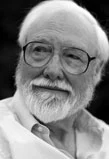












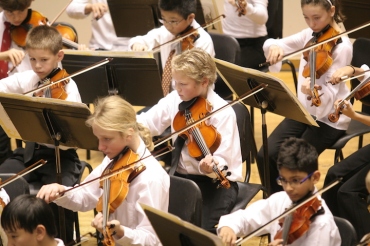
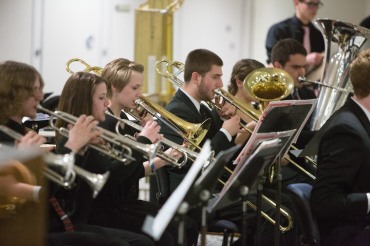
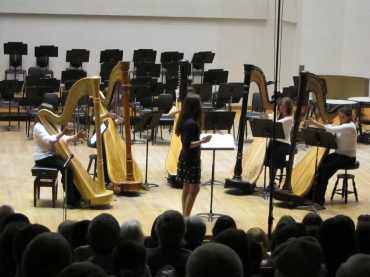
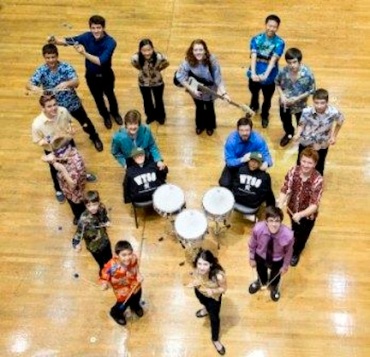
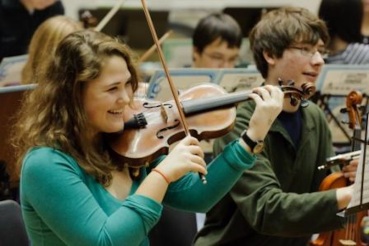



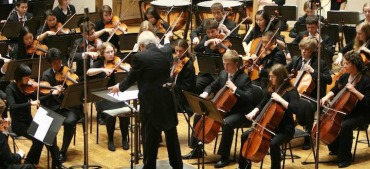




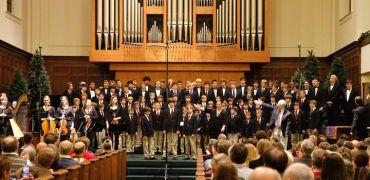












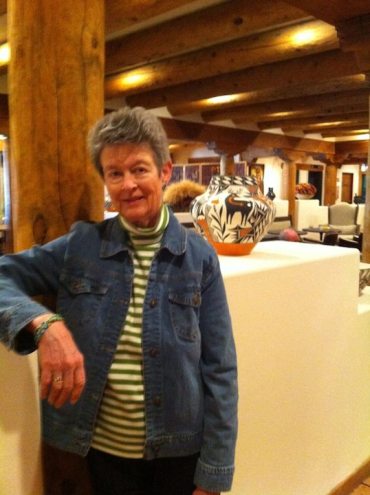







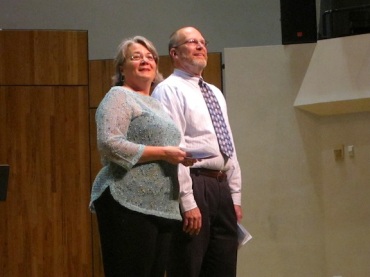


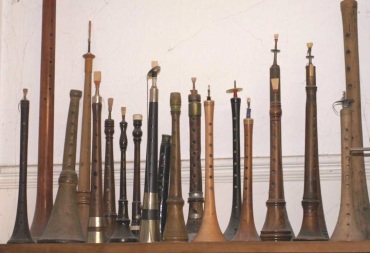
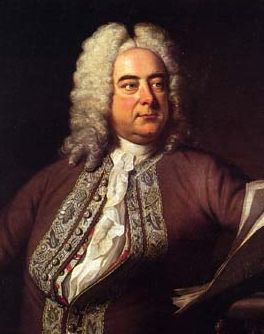
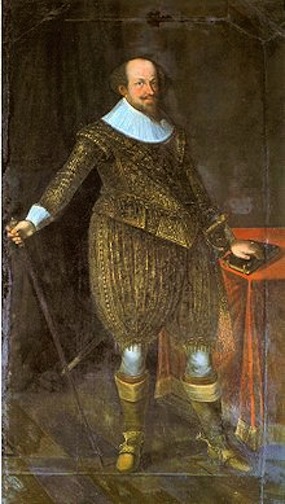
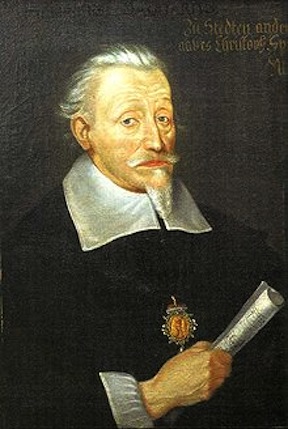
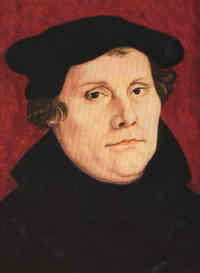
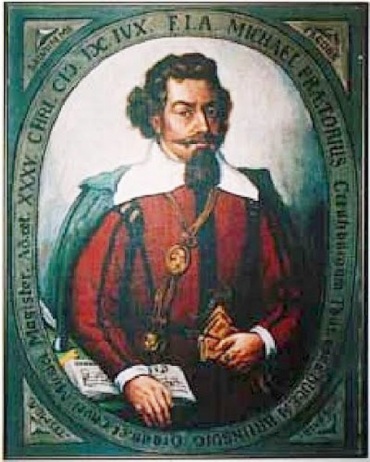

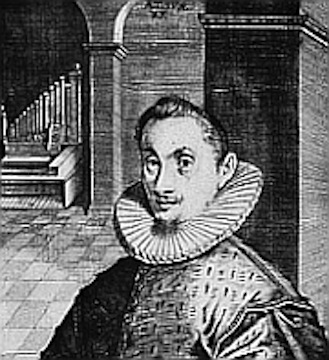
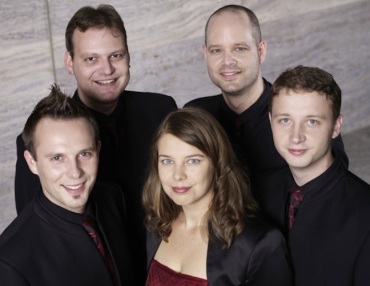
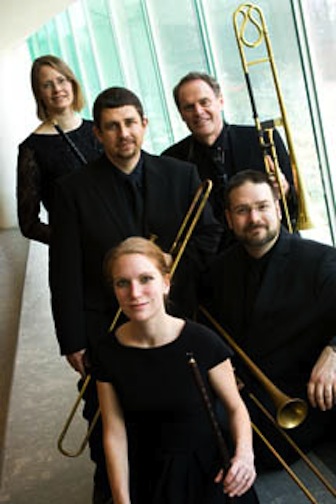
Classical music: The Ear wishes you a Merry Christmas with three of his favorite pieces of music. What are yours?
3 Comments
PLEASE HELP THE EAR. IF YOU LIKE A CERTAIN BLOG POST, SPREAD THE WORD. FORWARD A LINK TO IT OR, SHARE IT or TAG IT (not just “Like” it) ON FACEBOOK. Performers can use the extra exposure to draw potential audience members to an event. And you might even attract new readers and subscribers to the blog.
By Jacob Stockinger
Today – Wednesday, Dec. 25, 2019 – is Christmas Day.
There is so much great Christmas music written by so many great composers. You’ll hear a lot of it tomorrow morning on Wisconsin Public Radio, starting at 9 a.m..
But here are three of The Ear’s favorites.
One comes from the “Christmas Oratorio” by the German Baroque composer Johann Sebastian Bach and is loud, upbeat and brassy.
The second is “Lo, how a rose ere blooming” is by the early German baroque composer Michael Praetorius, and is so hauntingly quiet and intimate, sounding almost medieval or chant-like.
The third work, also intimate but on a much larger scale, is the “Shepherds’ Farewell to the Holy Family” from “The Childhood of the Christ” by the Romantic French composer Hector Berlioz.
Here they are, first the Praetorius — in the original German — and then the Bach and finally the Berlioz.
And here is a YouTube compilation with almost three hours of seasonal music:
What is your favorite piece of classical music to celebrate Christmas?
Leave your answer – with a YouTube link, if possible — in the Comment section.
Share this:
Tags: #BaroqueMusic, #BaroqueOratorio, #BlogPost, #BlogPosting, #BrassMusic, #ChoralMusic, #ChristmasDay, #ChristmasMusic, #ChristmasOratorio, #FacebookPost, #FacebookPosting, #Frenchcomposer, #GermanComposer, #GreatComposers, #HectorBerlioz, #HolyFamily, #JesusChrist, #JohannSebastianBach, #MerryChristmas, #MichaelPraetorius, #PieceofMusic, #RomanticMusic, #SeasonalMusic, #StateOfWisconsin, #TheEar, #VocalMusic, #WisconsinPublicRadio, #YouTubevideo, Arts, audience, Bach, Baroque, Berlioz, blog, brass, brassy, celebrate, chant, childhood, choral, choral music, Christ, Christian, Christianity, Christmas, Classical music, comment, compilation, composer, conductor, Early music, event, Facebook, Family, farewell, favorite, forward, French, German, great, great composers, haunting, Hector Berlioz, Holiday, holy, intimate, Jacob Stockinger, Jesus, Johann Sebastian Bach, Johanne Sebastian Bach, larger, like, link, Lo How a Rose, Lo How a Rose Ere Blooming, loud, Madison, mark, Medieval, Merry Christmas, Michael Praetorius, morning, Music, online, oratorio, Orchestra, piece of music, post, posting, quiet, Radio, reader, Religion, Romantic, scale, seasonal, share, shepherd, symphony, tag, The Ear, today, tomorrow, United States, upbeat, vocal music, Wisconsin, wisconsin public radio, WPR, you, yours, YouTube